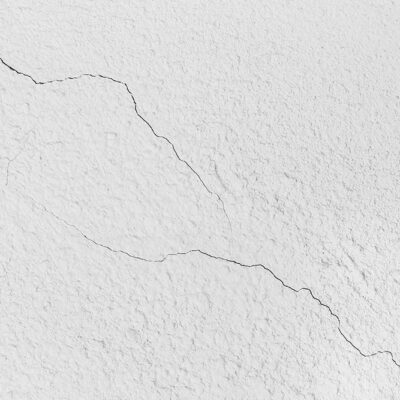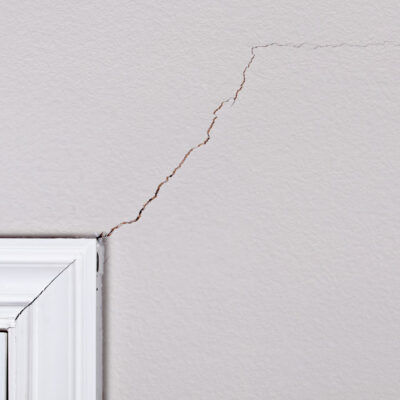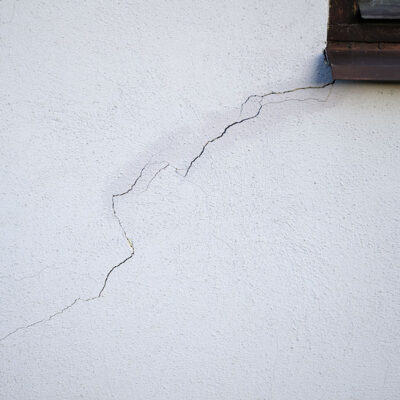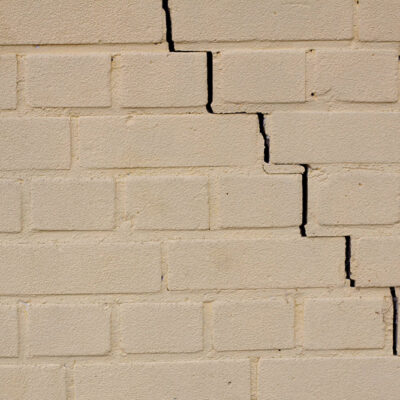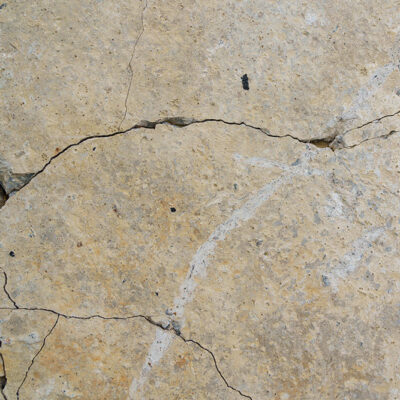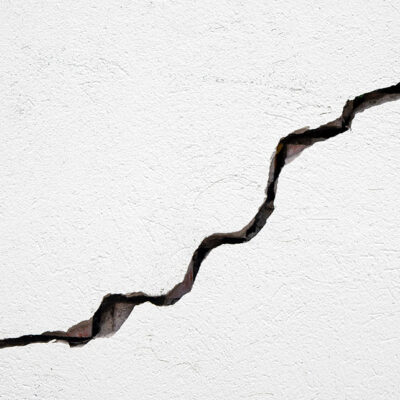Finding and identifying concrete crack types is an important part of monitoring the structural integrity of these types of structures. If they develop and keep getting worse, they will reduce the effectiveness of its load-bearing capabilities (which can cause the entire structure to fail). The crack identification process can be time-consuming, and each inspector will make different judgments. It can also be hard to identify, especially if they’re on high-rise buildings and bridges.
If you see a crack in your foundation, there usually isn’t any reason to panic. Most cracks in a poured concrete foundation are a result of natural settlement and shrinkage of the concrete, which happens during the curing process. This can be fixed, or it can be left alone. If the cracks are unusually large or allow seepage to get into your home, it’s often a sign that a more serious structural problem exists.
Possible Causes for Foundation Cracks
Cracks can appear in concrete foundations for a number of reasons. And because they may have a combination of causes, finding the exact reason isn’t always clear. Some of the reasons why foundation cracks appear can include:
- Shrinkage — This can happen not long after a house has been built. If the poured concrete foundation dries too quickly, it can shrink and cause hairline cracks.
- Settlement — Foundations cracks can be caused by settlement or movement, which is often the result of sinking or shifting of the soil underneath. All foundations will settle over time. But if it settles uniformly as a whole, it won’t get severely damaged. Serious cracks can occur when the settlement is uneven, which is often referred to as “differential settlement.”
- Weather Extremes — This can lead to variations in soil moisture, which can cause the soil surrounding your foundation walls to shrink or swell. During the summer or periods of dry weather, the soil will shrink away from your foundation walls. During the winter, the water inside overly-saturated soil can freeze. And the expansion that occurs can put pressure on the foundation walls. This repeated process of expansion and contraction can put your foundation under a great deal of stress and can eventually lead to cracking.
- Expansive Soils — This can be common in areas that have large amounts of expansive clay in the soil, which can swell when it gets wet. This volume increase of 10% or more can create enough pressure to crack concrete foundations, especially on the walls and floor.
The direction and width of foundation cracks will usually tell you if there’s any cause for concern. Many of them will mostly be aesthetic and may only need a cosmetic repair, especially if you find them to be a proverbial eyesore.
Of all the concrete foundation types you’re likely to encounter, the ones in a vertical direction will be less serious and are usually the result of normal settlement. But if they run diagonally or horizontally through your walls (or if they’re wider than 1/8 of an inch), they’re often caused by differential settlement or soil pressure. And it could be signs of a more serious structural problem that’s in need of more extensive repairs.
Types of Foundation Cracks
Foundation cracks can be classified as either structural or non-structural. There’s a big difference between the two, and so will their consequences. One is superficial in nature, which will be less severe. The other one is more deeply rooted and can be more dangerous. Knowing the difference between structural and non-structural cracks will help you to know what you’re dealing with, so you can take more appropriate measures.
If you’re not sure what type of foundation crack has developed, you should have a qualified contractor come out to inspect the foundation. This person will be able to tell you what kind of crack has appeared on your foundation and will be able to give you a cost-effective solution.
Non-Structural Foundation Cracks
Also referred to as “cosmetic cracks,” these cracks won’t threaten your home’s structural integrity. They can appear over time and can be the result of any of the following:
- Fluctuations in the weather.
- Thermal movement.
- Hydrostatic pressure.
- Exposure to moisture.
- Normal aging.
Many of these factors are part of a natural process for all foundations, but here are some of the major signs of non-structural cracks:
- Cracks on the plaster.
- Vertical or diagonal cracks.
- Narrow cracks that are less than 1/8 of an inch.
- Cracks near doors or on the edges of windows.
- Plaster Cracking
- Crack From Door
- Window Corner Crack
Unlike structural cracks, cosmetic ones are usually thin and less aggressive. They also don’t require any elaborate repairs. And when they’re fixed, they tend to last a long time. The only thing you need to worry about is when water starts to seep through, because it can cause mold growth.
Structural Foundation Cracks
Structural foundation cracks can occur because of poor construction, overloading, or improper soil bearing. These concrete foundation types may not bring water in right away, but they will over time. Here are some of the signs that there are structural cracks in your foundation:
- Stair-step cracks.
- Cracks on the foundation slabs.
- Vertical cracks that are wide at the bottom or top.
- Cracks with a width that’s larger than 1/8 of an inch.
- Star Step Brick Wall Crack
- Slab Foundation Cracks
- Large Wall Crack
Structural cracks in your concrete walls and foundation can be because of a significant amount of shifting, and any delay in fixing the issue will lead to more problems later on. They will also be harder and more expensive to fix, so be sure to speak to a qualified professional to get it taken care of as soon as possible.

